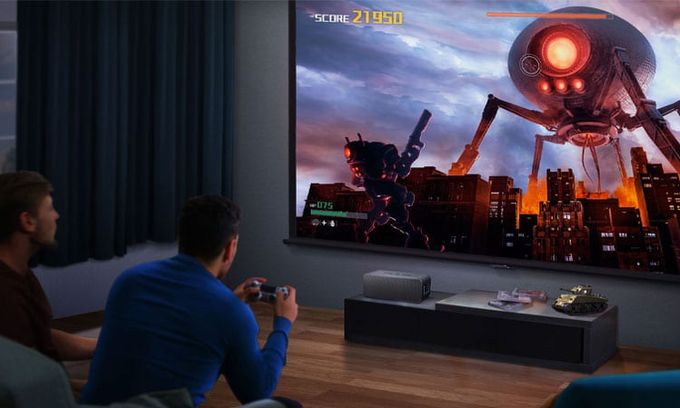Technological progress has provided a sharp increase in the popularity of projectors. For example, Ultra Short Throw (UST) projectors are becoming an increasingly attractive living room TV alternative. This is due to several factors, including:
– UST design with placement of the projector close to the screen fixed the wire problem on the floor or complex ceiling mounting.

– unlimited content through screen mirroring and streaming stick.

– high brightness of solid-state light (SSL) sources (LED, laser phosphor or triple-laser RGB);
– wide color gamut of modern light engines (107% of BT.2020 in triple-laser models);
– effective ALR (Ambient Light Rejection) screens, etc.
Gaiming projectors are developing no less vigorously. The huge screen is the decisive advantage of the projector vs TV, providing a comfortable game even for several players.
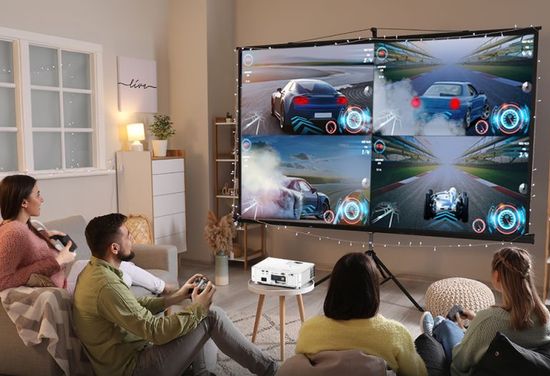
BenQ projectors
BenQ is one of the leaders in this segment, which is due to quite objective reasons. As known, in December 2001, Acer announced the separation of its Acer Communications & Multimedia division into a separate company called BenQ (Bringing Enjoyment and Quality). Initially, the new company was created for the production of computer equipment and electronics. But five years later, Acer sold the shares of BenQ. In 2007, BenQ announced the rebranding to Qisda (Quality Innovation Speed Driving and Achievements). In addition to OEM production, it manufactures monitors and multifunctional peripherals.
In fact, the company has divided the business into the OEM/ODM manufacturing parts and products for third-party brands, and the brand business (selling products under the BenQ brand). Today, BenQ projectors, monitors and other products successfully compete in the market.
On December 10, 2015, BenQ announced the acquisition of ZOWIE GEAR, which develops professional eSports equipment. Today, the developers of the legendary Zowie monitors are taking part in the development of BenQ gaming projectors.
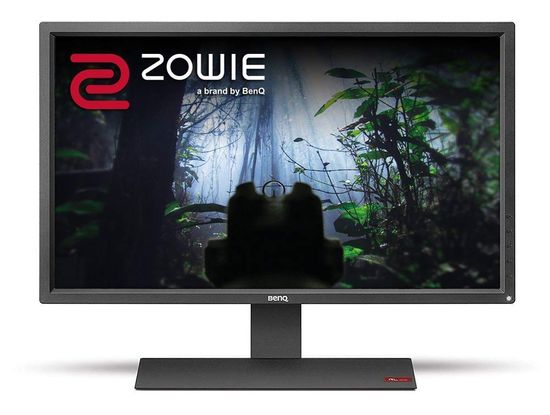
In addition, the company produces gaming monitors, keyboards, and other gaming accessories under this brand.
Finally, founded in 2015, BenQ Color Lab develops new technologies. For example, CinematicColor technology has improved color accuracy by dynamically correcting colors according to Rec.709 HDTV standard. As a result, BenQ projectors support 100% coverage of the DCI-P3 color space.
Resolution & brightness
Losing in image size, until a few years ago TVs provided a brighter picture with higher resolution. But the situation is rapidly changing.
For a 60-inch image, the eye can’t tell the difference between 1080p and 4K resolution from 6 feet away. Indeed, even 2 million pixels form a clear image on a relatively small screen due to the high pixel density. But the situation changes when the screen is enlarged to 100 inches and above.
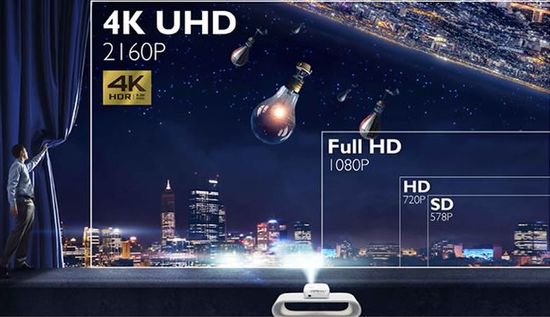
Therefore, the big projector screen needs to increase the resolution. A few years ago, 4K models were very expensive. Digital Micromirror Device (DMD) chipset with XPR (Xpanded Pixel Resolution) technology from Texas Instruments has revolutionized the DLP projector market. Using 2/4-phase pixel shift, it displays 8 million pixels of 4K content using a relatively cheap 1080p chipset with 2 million micromirrors. In fact, the projector plays 1080p-images 4 times, shifting them by half a pixel using 4 XPR electromagnets of the module, which change the angle of the lens.
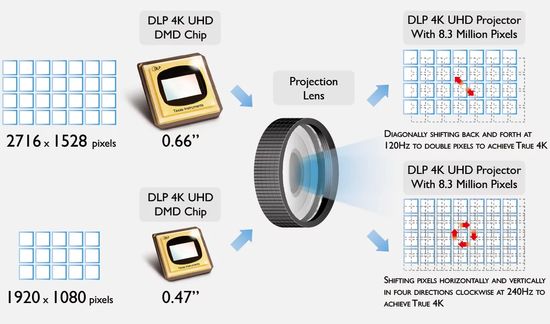
This technology has significantly reduced the price of 4K DLP projectors.
A brighter TV image is due to the perception of the direct light flux, in contrast to the reflected light of the projector. In fact, increasing brightness is a way of compensating for the ambient light, which makes the image faded and dull.
The use of more efficient technologies partially solved this problem. For example, last year’s BenQ X3000i and BenQ X1300i use 4LED light source with additional blue pump LED.
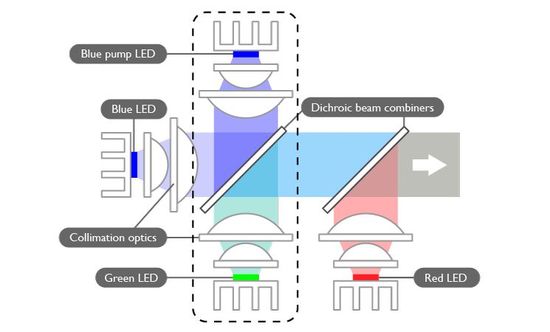
Light output from additional blue LED is passed through a phosphor, changing its color to green. It maximally affects the brightness perception by the eye. As a result, the brightness of BenQ projectors reaches 3,000 ANSI lumens.
Input lag
This is a time in gaming between a controller’s button press and the reaction on the screen. For most games, a high input lag causes a feeling of sluggishness in the gameplay, reducing the enjoyment of the game. But in some highly dynamic games (Battlefield, Mortal Kombat, etc) this problem drastically increases, reducing app playability up to critical minimum.
A few years ago, projectors were vastly inferior to TVs, many of which had an input lag of less than 20 ms. But modern projectors have actually solved this problem. By analogy with TVs, developers reduce input lag by automatically disabling additional video processing algorithms in games, including interpolation, keystone adjustment, etc.
For example, the Fast Mode option in BenQ gaming projectors reduces the input lag of 1080p (1,920×1,080)/ 4K (3,840 x 2,160)@60Hz to ~16 ms. Moreover, it does not exceed 8.2 ms for 1080p@120 Hz and an unprecedented 4.16 ms for 1080p@240Hz. In fact, this factor disappears even in ultra-dynamic games. The projector automatically activates Fast Mode in Game Mode (HDR Game Mode) with 4K@60Hz or 1080p@60/120/240Hz.
For reference, according to the industry standard, models with input lag up to 20ms are positioned as fast.
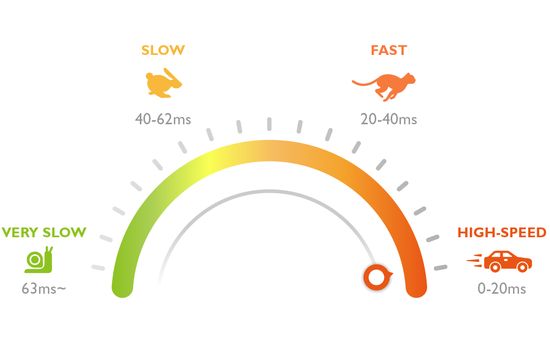
But it works without keystone adjustment with auto setting for aspect ratio.
BenQ projector technologies
BenQ opto-mechanical structure
The image quality is highly dependent on contrast. In turn, it depends on the black depth, which is almost ideal only in very expensive LcoS (Liquid Crystal on Silicon) projectors. This technology produces near-perfect blacks due to the tiny gaps between the liquid crystals, which practically do not transmit light. Of course, the developers of DLP and 3LCD models are also solving this problem. In particular, BenQ uses special heat resistant matte paint and meticulously-polished lenses, reducing light scattering on the DMD chip to minimum. The company calls this technology Zero Light Overflow.
The motion-adaptive edge enhancement Pixel Enhancer feature detects changes in color between an object and its background, enhancing sharp edges and precise surface textures. CinematicColor technology corrects colors according to Rec.709 HDTV standard, supporting 100% coverage of the DCI-P3 color gamut.
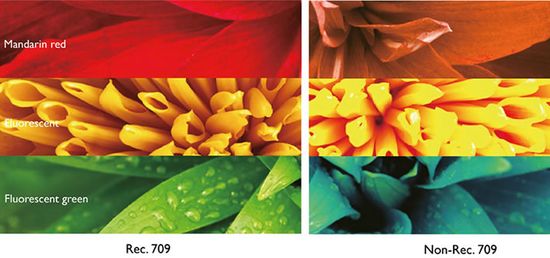
In addition, auto HDR Natural Color Rendition technology provides auto color correction based on waveform analys.

Moreover, compared to TVs, the projector’s reflected light limits the intensity of blue exposure to our eyes, reducing eye fatigue.
BenQ game mode offers dedicated settings for different playstyles:
– first-person shooters (FPS) – discloses fine details in darker scenes, what is important in shooter games;
– role-playing games (RPG) – best color performance for a cinematic image;
– sports games (SPG) – enhances green.
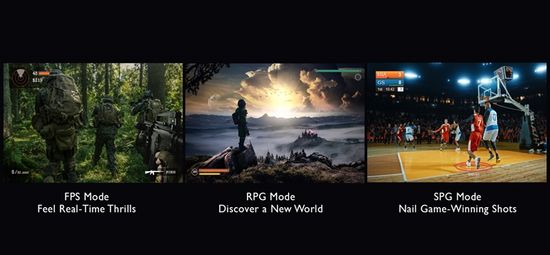
Moreover, this mode optimizes the sound for them.
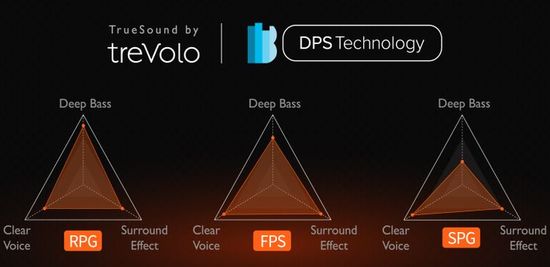
Overall, the sound quality of modern projectors is much better than ultra thin TVs.
BenQ gaming lineup
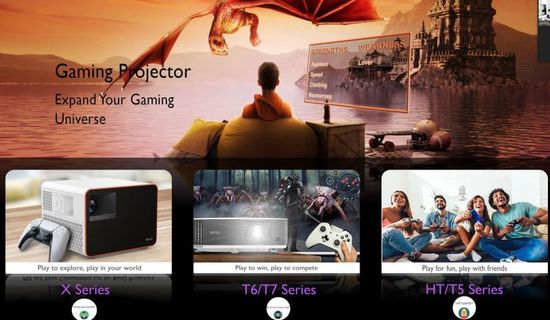
BenQ range includes:
-‘Designed for Gaming’ X series.
The $ 2,000 X3000i flagship offers 4K resolution, innovative 4LED light source, an immersive sound system, advanced gaming features with high frame rate, super-low input lag and dedicated Game Setting modes. In addition, it uses all of BenQ’s innovative technologies, including 100% DCI-P3 color gamut with CinematicColor. The cheaper X1300i costs ~ $ 1,300 and only differs in 1080p resolution. Both models have compact cube-like form factor.
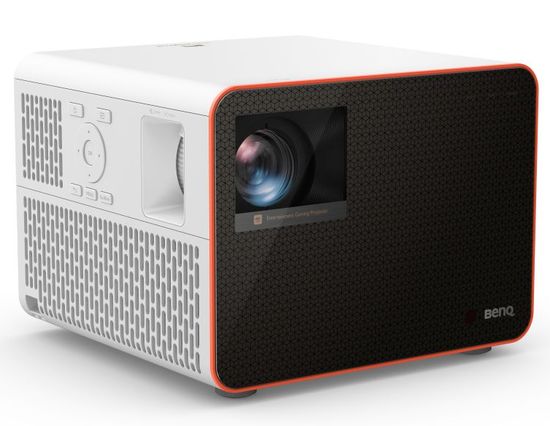
-T7 and T6 ‘Game Ready’ series (TK700 / $ 1,300, TK700STi / $ 1,500, TH685 / $ 800, TH671ST / $ 800) have traditional form factor, lamp-based light engine, and offer some gaming features, including high frame rate and low input lag;
– HT and TS ‘Party Gaming’ series (HT2050A / $ 650, HT2150ST / $ 800, TH585 / $ 600) are ideal for big screen viewing of movies and casual gaming.
All projectors produce a 100-inches image from 1.5 meters and more, creating a problem with wires on the floor.
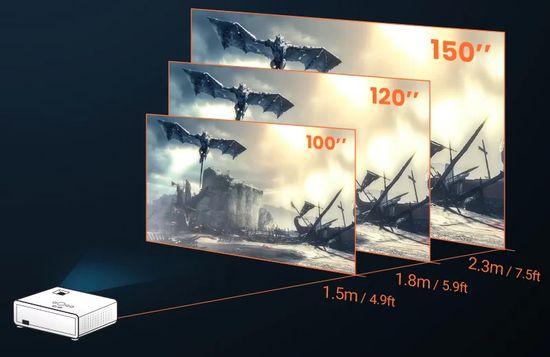
As known, UST (Ultra Short Throw) projectors are placed almost close to the screen. But BenQ lineup does not include the gaming UST models. However, this is due to quite objective factors. More expensive UST models are mainly designed as an alternative to TV in the living room with a lot of additional video processing algorithms that increase input lag. Their use for games with minimal video processing is irrational. For reference, the $ 2,500 Epson EpiqVision Ultra LS500 is considered the best gaming UST projector. BenQ’s UST-range includes a V7000i (eu) / V7050i 4K UST Laser TV w/ 98% DCI-P3, HDR-Pro, Android TV, 2,500 ANSI Lumens for $ 2,300.
Popular BenQ gaming models
X3000i
– 3,000 ANSI lumens brightness with 4LED light engine;
– 500,000:1 contrast ratio with Dynamic Black;
– 0.65-inch DMD with XPR 4K technology from Texas Instruments (2/4-phase pixel shift, 3,840 x 2,160 resolution);
– DCI-P3 wide color gamut with CinematicColor;
– Input lag – 16.67 ms for 4K / 1080p@60Hz refresh rate, 8.33 ms at 1080p@120Hz, and 4.16 ms for 1080p@240Hz;
– 4K HDR10/HLG support;
– 2x 5W speakers with treVolo setting;
– Android TV OS + QS01 streaming stick;
– FPS / RPG / SPG game settings.
TK700 / TK700STi 4K
The BenQ TK700 is a long-throw version of the TK700STi. It uses a lamp light source and 0.47-inch XPR DMD chipset with 4-phase pixel shift, displaying 8 million pixels of 4K (3,840 x 2,160) content.
Specs (TK700 / TK700STi):
– 3,200 / 3,000 ANSI lumens brightness;
– 0.47-inch XPR DMD ship (4-phase pixel shift, 3,840 x 2,160 resolution);
– color gamut – 96% in Rec. 709 with CinematicColor;
– HDR10/HLG support;
– screen size – 100in@8′ 2″ (2,5 m) / 100in@ 7’2″ (2.2 m);
– input lag – 16.67 ms for 4K / 1080p@60Hz refresh rate, 8.33 ms at 1080p@120Hz, and 4.16 ms for 1080p@240Hz;
– 1x 5W treVolo-tuned speaker;
– optional BenQ QS01 streaming stick.
TH690ST
Today it’s best gaming 1080p BenQ projector with ~ $ 1,100 price.
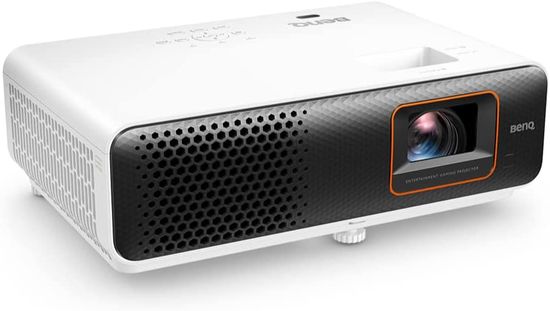
Its name does not contain an ‘i’ at the end because the model does not support the Android TV smart TV platform.
Specs
– 2,300 ANSI lumens brightness with 4LED light engine;
– 3D support;
– color gamut – 98% in Rec.709 and 84% in DCI-P3 for HDR;
– FPS / RPG / SPG game settings;
– Input lag – 8.2 ms for 1080p@120Hz;
– 2x 5W speakers.
Conclusion
In fact, BenQ offers gaming projectors in all price ranges from $ 600 to $ 2,000. But the competition between 1080p models with lamp light engine under $ 1,000 is too fierce. For example, Optoma HD39HDR 1080p offers 4,000 ANSI lm and 50,000:1 contrast ratio for $ 850. Lamp-based Epson Home Cinema 880 3LCD projector with 1080p resolution and 3,300 lumens of color and white brightness costs only $ 600. Of course, BenQ competes successfully in this segment, but its pros are ambiguous. In the $ 1,000 – $ 2,000 segment, the company also offers a few great models, but they don’t dominate.
But last year’s flagship is quite rightly positioned as one of the best projectors on the market. At under $ 2,000, BenQ X3000i 4LED 4K offers superb value for money. The long list of his pros includes:
– 4LED light engine with 3,000 ANSI lumens brightness;
– 500,000:1 contrast ratio with Dynamic Black;
– 4K (3,840 x 2,160) resolution with new 0.65-inch DMD (XPR 4K technology from Texas Instruments with 2-phase pixel shift);
– DCI-P3 wide color gamut with CinematicColor;
– Input lag – 16.67 ms for 4K / 1080p@60Hz refresh rate, 8.33 ms at 1080p@120Hz, and 4.16 ms for 1080p@240Hz;
– 2x 5W speakers with treVolo setting;
– Android TV OS + QS01 streaming stick;
– 3D;
– FPS / RPG / SPG game settings.
In fact, it only competes with:
– triple-laser RGB Hisense PX1 UST – $ 2,000, 2,000 ANSI lumens brightness;
– NexiGo PJ90 Aurora UST – $ 2,100, 2,200 ANSI lumens (laser phosphor).
This video demonstrates BenQ X3000i gameplay.
